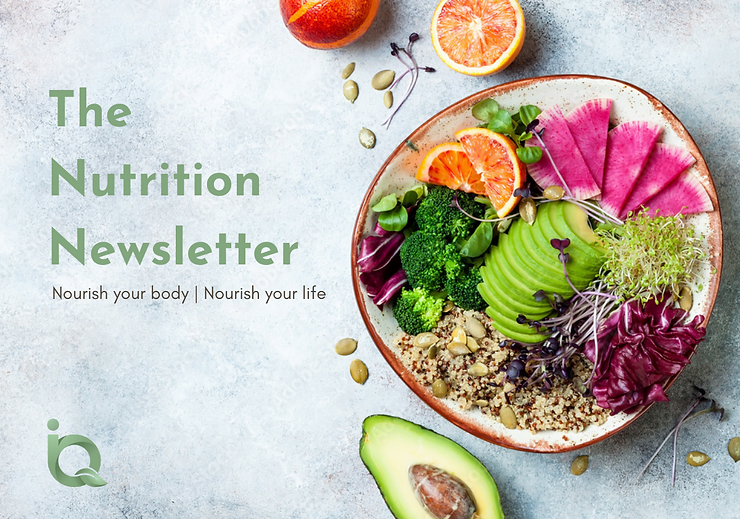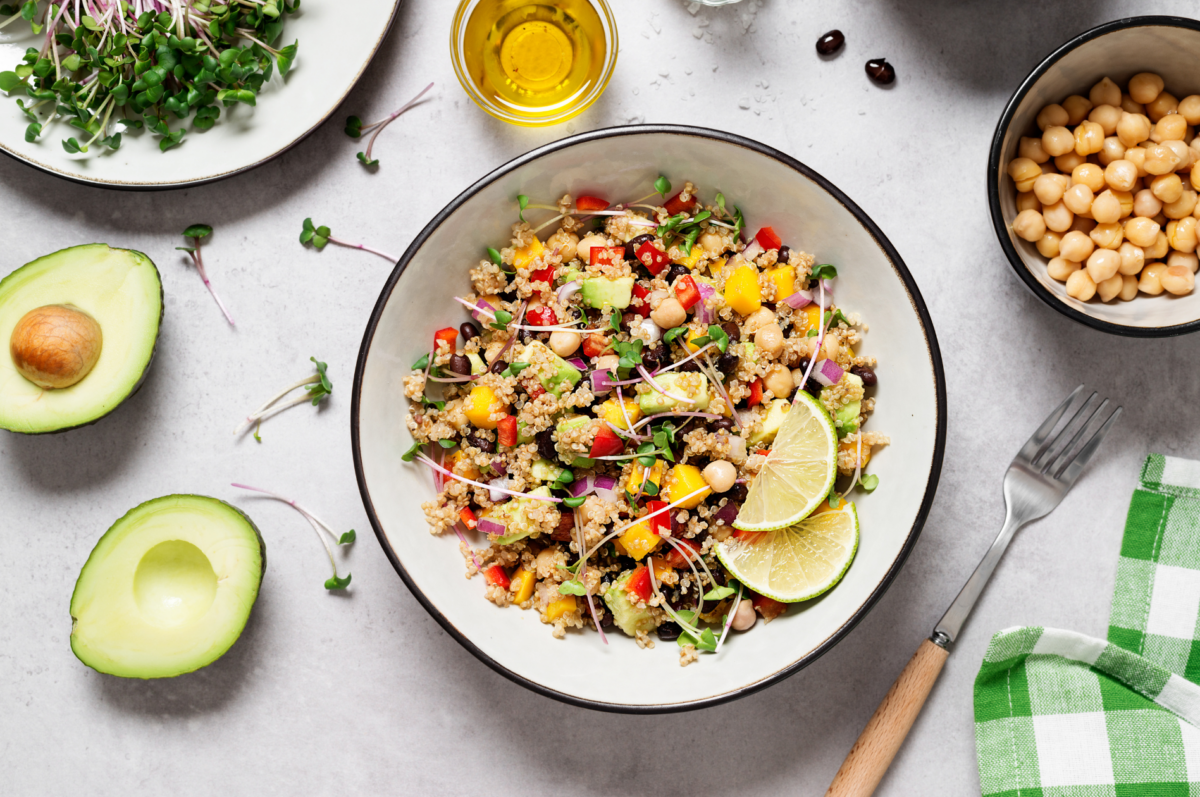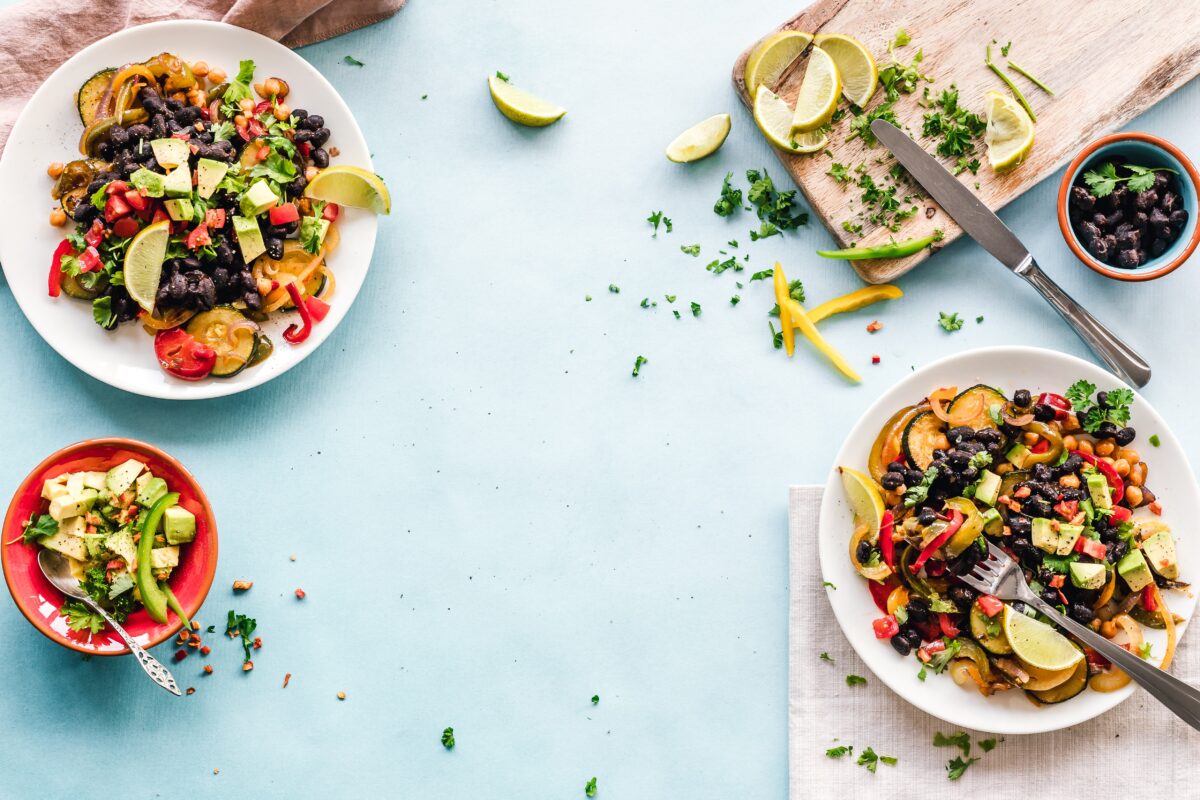Micronutrients are an important part of our diet and there are many that we don’t often think about. This month’s newsletter covers what you need. to know about getting these essential nutrients into your diet in fun and easy ways.
What are Micronutrients?

Micronutrients are the vitamins, minerals, and phytonutrients found in foods. All foods have both macro– and micronutrients, including animal-based foods, plant foods, and even processed foods.
You’re likely well aware of the role that macronutrients play – these are what we “count” as calories in foods – carbs, fats, and proteins. Macros are essential for building tissue and supplying fuel to create energy. For this reason, they often steal the show in the world of nutrition. If you want to lose weight – count your macros. If you want to build muscle – eat more protein. If you want to balance blood sugar – mind your carb intake.
Our food culture has conditioned the belief that macronutrients are most important to nutrition, causing us to overlook micronutrients often to the detriment of our health.
Essential Micronutrients:
- Vitamins: Vitamin A, B, C, D, E, and K
- Minerals: Sodium, Potassium, Calcium, Phosphate, Iron, Chloride
- Trace Minerals: Copper, Magnesium, Zinc, Iodine, Fluoride, Manganese, Selenium, Molybdenum, Chromium, Boron, Sulfur.
- Phytonutrients: Lycopene, Ellagic acid, Resveratrol, Glucosinolates, lutein, flavonoids, coumarins, indoles, isoflavones, lignans, anthocyanin, and plant sterols to name a few.
What They Do in the Body
Micronutrients act as co-factors in the body or as ‘activators’ of pathways and functions. Without them, our bodies would not be able to effectively use the macronutrients we eat. You can think of them as spokes of the gears that keep a clock running. If you’re missing certain spokes, the gears skip and get backed up, ultimately resulting in a broken clock.

You need sodium, calcium, and potassium in order for your nerves to send signals to the rest of your body. Chloride regulates pH, iron is essential for the delivery of oxygen to the body. Vitamins are essential for thousands of different functions.
Other minerals are called ‘trace minerals’ because they’re present in smaller amounts but they are no less important. Copper is essential for energy production in the mitochondria, iodine is needed to make thyroid hormones and maintain metabolism, and magnesium is crucial for over 600 different functions in the body including insulin production, nervous system function, and muscle relaxation.
The Role Our Diets Play
Mineral cofactors or ‘activators’ are essential for all physiologic functions, this is why you find electrolytes in water flavor packets and sports drinks and why vitamin and mineral supplements exist. Many people take these supplements because we are aware that we need these nutrients. But if you think about it, humans have existed much longer than synthetic vitamin and mineral supplements, so the question is, “do we really need them?”
It’s a valid question, and the answer is that we shouldn’t have to depend on supplements to supply what we’re supposed to get from our food, but our current food culture, agricultural practices, and food processing methods make supplementation nearly essential.
The process of ‘processing’ our foods strips the parts that do not hold up long on a shelf – and these are the parts that have all of these essential nutrients. We’ve also depleted the soil of the minerals that fill fruits and vegetables so their mineral levels are lower than they should be; our cooking methods and what we eat have also dramatically changed in the last 100 years.
Then there’s the unfortunate truth that many people just don’t eat the best quality diet. It’s already hard enough to get these nutrients from foods, and for those who are not eating adequate amounts of whole foods daily, it’s especially hard to achieve adequate micronutrient intake from the diet.
Supplementation is arguably essential for all given these issues, but this can come with its own set of issues. Many synthetic vitamins and minerals are not absorbed and utilized by the body because your body actually prefers to get these from food (like humans have done for thousands of years).
So what is one to do? There are strategic ways to ensure you get these vital nutrients your body needs from foods and minimal supplementations – and some of these can even be fun.
What are Phytonutrients?

Phytonutrients are the active constituents of foods that elicit specific effects in the body. These are what give foods and herbal supplements such strong therapeutic effects in the body.
Blueberries are blue because of anthocyanin, a compound that acts as a strong antioxidant. It can pass through the blood-brain barrier and has shown to be very effective in supporting brain health [1, 2].
Tomatoes, cherries, and red bell peppers are red thanks to lycopene. This phytonutrient has been shown to be protective of prostate health and even protective against prostate cancer [3]. Green tea is an excellent source of many powerful antioxidants as well.
There are thousands of other phytonutrients found in every plant species (including grains and beans along with fruits and vegetables). A diverse whole food diet ensures that you get the health benefit from phytonutrients.
Read more about phytonutrients (blog)
A Food-First Approach

Eat a Rainbow
Have you ever wondered what makes fruit and vegetables colorful? It’s due to the different vitamins and phytonutrients in these foods. Has anyone ever told you to eat carrots for your eye health? That’s because beta-carotene (the phytonutrient that makes foods orange) is a precursor to vitamin A (though recent research has shown that very few people actually convert beta-carotene to vit A – there’s a better way to get this vitamin from food discussed below).
The more colorful the foods you eat, the more essential vitamins, and minerals you’ll get to your cells that depend so heavily on them, and the more health benefits you’ll receive from phytonutrients
Try to have at least 1 serving of fruits and vegetables of each color, of the rainbow each day. This is a really fun and exciting way to approach nutrition and is an excellent way to ensure our younger – and usually picker – eaters get a healthy dose of fruit and vegetables in their diet.
Make it a game, make it fun. Here are some prints you can download to help keep you and your family on track to a whole array of phytonutrients from food.

Spirulina is an alga that’s also an incredible superfood. It’s loaded with vitamins, minerals, and potent phytonutrients that support multiple systems in the body.
Eat Like Your Ancestors
Other important ways of getting adequate vitamins and minerals in your diet are by eating in such a way that our culture has mostly strayed far away from – sprouted grains, fermented foods, and eating organ meat. I know, I know, this sounds awful, but hear me out before skipping this section (you don’t have to actually eat organ meat).
This is an ancestral practice that was foundational to human survival for thousands of years -remember, we didn’t always have vitamin and mineral supplements.
Sprouted Grains:
This is. the process of soaking seeds, beans, grains, or nuts in water for a few days to allow little green shoots to emerge from the fibrous shells. They can be thought of as the plant versions of egg yolks, and human stem cells meaning they contain the foundational information that has the potential to become a fully grown plant from that tiny little seed.

Because these foods house the potential for life, they are loaded with vitamins, minerals, and phytonutrients but they are locked away in a fibrous matrix of cellulose and other insoluble fibers that holds them in place. Our digestive systems can’t break down these fibers and thus many of these micronutrients are inaccessible to use.
When you sprout seeds, you unleash the micronutrients and phytonutrients because the growing process helps break down the fibers. You’ve likely seen bamboo shoots, mung beans, and alfalfa sprouts in grocery stores. These are great nutrient-dense foods to top salads and sandwiches with. You can also make them at home. Broccoli sprouts are great as they’re the highest naturally-occurring source of sulforaphane which enhances antioxidant production in the brain and body [3].
Fermented Foods:
Similar to the way that sprouting unleashed nutrients from their fibrous matrixes, fermenting foods do the same via a slightly different method.
Fermentation was used ancestrally as a method of preserving fruits and vegetables that would otherwise spoil quickly. Often foods are preserved in a salty, vinegar brine that would allow food to be eaten throughout the winter that otherwise would only be edible for a few days after being picked. These brines are rich in microbes that break down the fibers we can’t digest – making more micronutrients available to us.

Another benefit of fermented foods is the microbe themselves. They help your own microbiome thrive and promote a balance of healthy bacteria. Having a diverse array of gut microbes at healthy levels improves nearly every system of the body. Eating fermented foods was shown to be better for your immune system and microbiome diversity than just eating prebiotic (aka fiber-rich) foods [4]. I would argue that this is even superior to taking probiotic supplements daily for most healthy people, though probiotic therapy may be helpful and/or essential for those with health imbalances.
Here’s an excellent podcast that dives into this research: https://hubermanlab.com/dr-justin-sonnenburg-how-to-build-maintain-and-repair-gut-health/
Fermented foods for Probiotic support
Be sure to get these from the refrigerated section to ensure the microbes are still alive
- Yogurt
- Sauerkraut
- Kimchi
- Kombucha
- Kefir
- Cheese
- Tofu
- Natto
- Vinegar
Organ Meat:
When we had to hunt and gather our food, we did not let any of it go to waste. Organs are where most of the vitamins and minerals are stored in our bodies. Bone broth is an excellent source of nutrients for your bones, tendons, cartilage, ligament, and soft tissue making it great for arthritis and general health.

Consuming bone broth and organ meat is hands-down the best way to get micronutrients from foods. But I get it. This does not sound very appetizing to many people. I’m with you, I know it’s just a cultural thing, but I just can’t bring myself to eat organ meat – so I personally get these in via supplements.
Desiccated beef liver is high in natural vitamins and minerals which are much more bioavailable (aka better for health) than synthetic vitamins and minerals. You can use bone broth in cooking or take it as a supplement as well. Cod live oil is the highest natural source of vitamins A and D.
I take the Formula IQ’s Recuperate IQ, Cod liver IQ, Recuperate IQ, Cod liver IQ, and Mag IQ daily along with eating a rainbow diet to maintain a healthy and balanced micronutrient intake.
If you’d like to take an even deeper dive into this topic, I highly recommend the book ‘Deep Nutrition; Why Your Genes Need Traditional Foods’ by Catherine Shanahan MD. It’s an excellent read and was one of the books that first got me so interested in nutrition.
What about the So-Called “Anti-Nutrients” in Fruits and Vegetables

So-called ‘anti-nutrients’ are naturally occurring compounds that are said to cause harm to the body in some way or block minerals from being absorbed from food. These are lectins (beans, grains), oxalates (greens), goitrogens (brassicas), phytoestrogens (soy, flax), phytates (legumes, beans), and tannins (teas, cocoa) found in many plant foods.
Many of these compounds are produced by plants as their own pesticides. Bugs don’t like the taste, and thus, these chemicals protect the plants from being eaten before they are fully mature and propagate their seeds.
This may sound concerning, and there are many practitioners out there who would try to convince you to avoid them at all costs. I know many people who actively avoid very healthy foods in order to avoid the scary ‘anti-nutrients’. If you’re one of these people or if you’re concerned about what you may have read on the internet, I hope to convince you to keep these healthful foods in your diet.
Firstly, human beings have been eating these foods with their ‘anti-nutrients’ for thousands of years without issues. A concept called hormesis states that a certain amount of stress is beneficial and required for adaptation and growth like exercise, cold or heat exposure, and fasting [5]. It would require an unrealistic amount of these foods to elicit negative health consequences for most individuals. The small amounts that we are exposed to have likely served as hormetic stressors over the thousands of years we’ve consumed them [6].
Secondly, many anti-nutrients are broken down with heat during cooking (this is why eating some beans raw can make you sick but not when they are cooked). Oxalates are an excellent example of this. This compound is high in green leafy vegetables like spinach and Swiss chard. Oxalates can block the absorption of zinc, copper, and magnesium from food, but when you cook these greens, oxalates are broken down.
Lastly, many of these nutrients have been observed to have negative health impacts only when taken in isolation and/or in very high amounts – again, this is not how we consume them [7]. We also have commensal gut bacteria that aid in breaking down these compounds in foods [8].
With all of that said, it is possible that some individuals do have issues with some of these compounds likely due to an imbalanced gut microbiome or genetic polymorphisms. Most people will not have issues with fresh, whole, natural food and so I’m not an advocate for extremely restrictive diets like this, they can lead to deficiencies in the essential micronutrients we’ve already discussed.
What You Should Actually Be Worried About in Your Food
A recent observational study that came out this year followed the diets of people over 20 years comparing the impact of pesticide residue in food on all-cause and disease-specific mortality. They used data from the USDA Pesticide Data Program to determine which foods have the highest and lowest amount of pesticides in them.
Researchers found that people who ate more than 4 servings per day of low-pesticide fruits and vegetables had a 36% reduced risk of mortality compared to those who ate less than 1 serving of low-pesticide fruits and vegetables [9].
What’s great about this study is that it did not look at organic vs. non-organic fruits and vegetables. Instead, it compared fruits and veggies that tend to have more or fewer pesticides within their meat. This helps to reduce the impact of ‘compounding variables’ that could lead to these findings (i.e. people who eat organic foods tend to participate in other healthy behaviors like exercise, cleaner eating overall, taking supplements, etc. than those who do not).
This study shows that even though you’re eating fruits and vegetables, the beneficial impact they offer may actually be negated by pesticides within them. I don’t know about you, but this is enough to convince me that it’s worth the few extra cents to purchase organic.
Thanks again for taking the time to read this month’s newsletter. If you’re interested in learning more about functional medicine and nutrition, please don’t hesitate to reach out to me.














